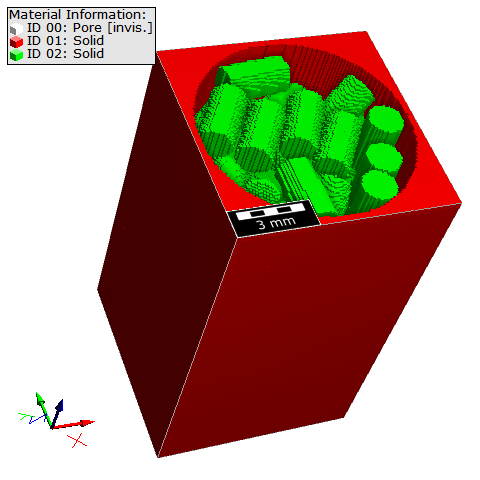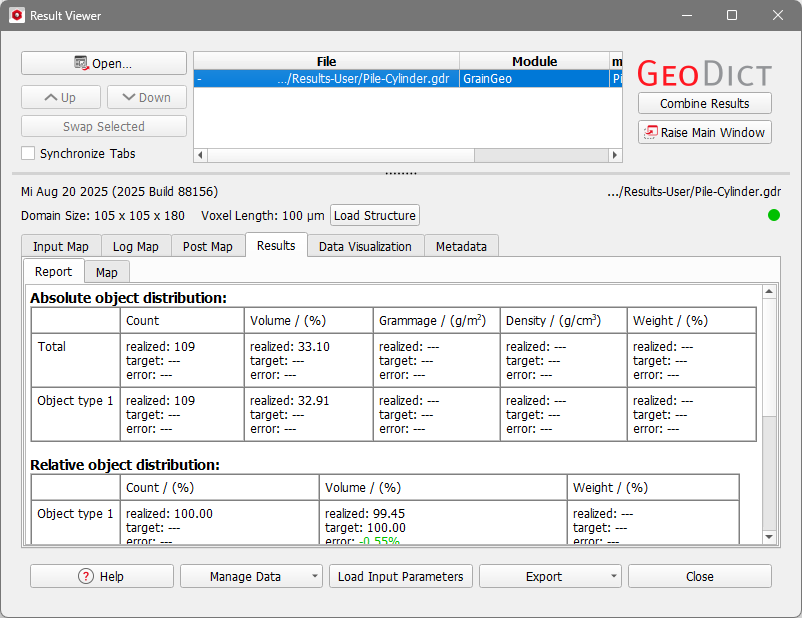Piling Cylindrical Catalysts
In the next step, we want to add cylindrical catalysts inside the modeled reactor. This is done by piling cylinders from one domain side (positive Z-direction) in negative Z-direction with GrainGeo-Pile.
- Right after finishing the previous step, the reactor model is still loaded and shown in the GeoDict visualization area. If this is not the case select Results-User as the project folder and open the Reactor.gdt file through File → Open Structure.
- Select Model → GrainGeo from the menu bar.
- Select Pile Grains from the drop-down menu in the GrainGeo module section and click Edit….
- In the GrainGeo Pile Options dialog, change the Result File Name to Pile-Cylinder.gdr.
- Then, under the Pile Options tab, adjust the settings as follows:
- Check Pile in Current Domain and Keep Current Objects/Structure. By doing so, the reactor is preserved and the objects are piled inside the tube.
- Make sure that Prohibit Object Overlap and Fill To Rim are selected at the bottom of this tab.
- As Random Seed, we choose 46.
- Under the Object Options tab, Remove any predefined objects. Then, in the upper right corner, set the length unit to mm
- From the Object Type pull-down menu select a Short Circular Fiber and click Add. Set Diameter/(mm) to 1.6 and Length/(mm) to 3.
- Do not change anything in the Object Motion and Result Options tabs.
- Click OK to close the GrainGeo Pile Options dialog and click Generate to start the piling process.
- After the run is finished, the model of the packed bed reactor appears in the Visualization area and the Result Viewer of the Pile-Cylinder.gdr result file opens automatically.

- In the Absolute object distribution table of the Result Viewer, observe the total number of objects piled into the domain as Count, as well as the volume fraction of the catalysts (Volume / (%)).

Note! The runtime depends on the available and selected parallelization and the selected voxel length. In this tutorial, a coarse voxel length of 100 µm is used. This ensures that the tutorial can be executed without long waiting times, but the results may be less accurate. In general, we recommend using a higher resolution (i.e. smaller voxel length) to ensure a higher accuracy of the results. |
